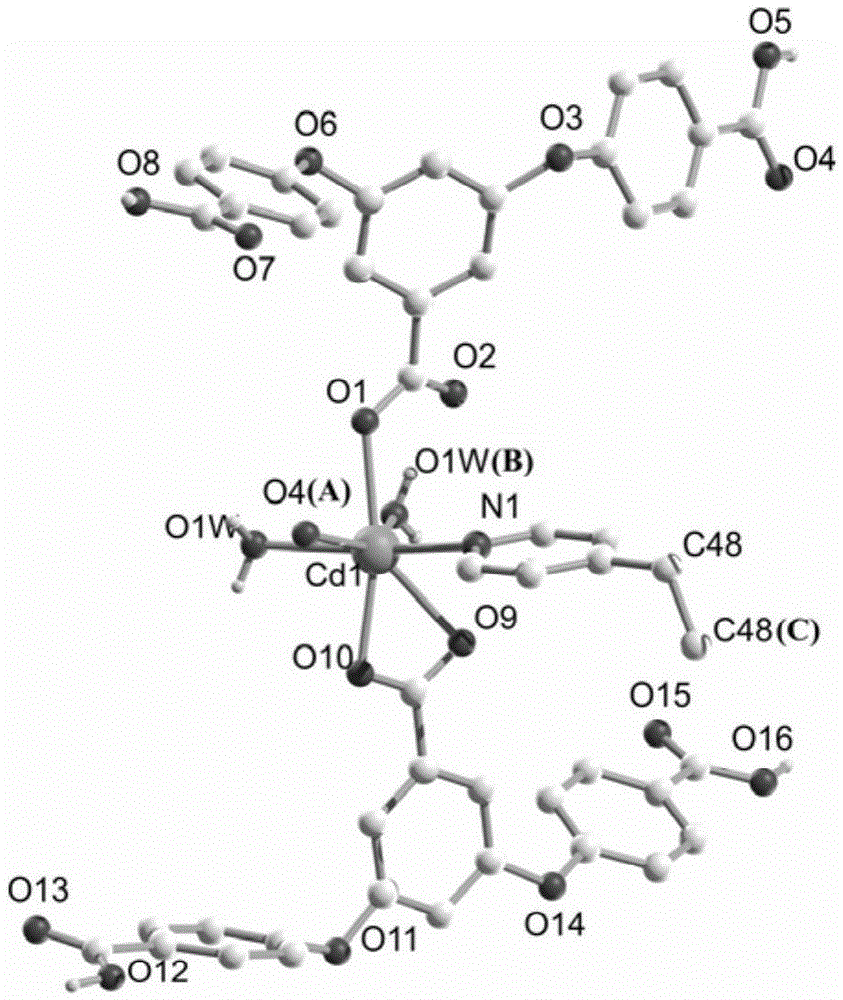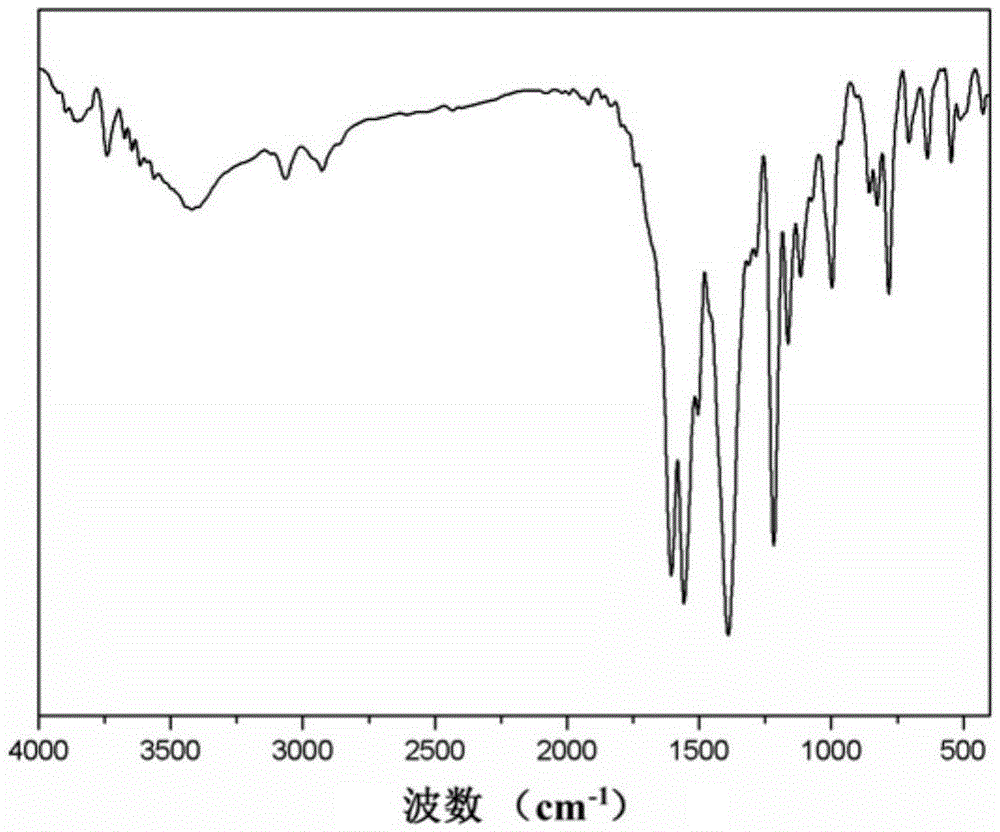Fluorescent coordination polymer material for adsorbing malachite green dye and thermal synthesis method thereof
A technology of coordination polymers and malachite green, which is applied in the direction of luminescent materials, cadmium organic compounds, chemical instruments and methods, etc., can solve the problems of unclear reaction mechanism and low synthesis efficiency, so as to improve the synthesis yield and purity, Effect of improving crystal quality and high purity
- Summary
- Abstract
- Description
- Claims
- Application Information
AI Technical Summary
Problems solved by technology
Method used
Image
Examples
Embodiment 1
[0039] This embodiment provides a step-by-step solvothermal synthesis method of a fluorescent coordination polymer material adsorbing malachite green dye, including the following steps:
[0040] 1) Preparation of deprotonated 1,3-bis(4'-carboxyphenoxy)benzoic acid ligand aqueous solution A using NaOH:
[0041] Weigh 1,3-bis(4'-carboxyphenoxy)benzoic acid (H 3 cpbda) ligand powder was dissolved in distilled water, the mixing ratio of the two was 1:1500 molar ratio, the mixed solution was placed in a beaker, and stirred at room temperature on a magnetic stirrer for 30 minutes. NaOH aqueous solution was added to make H 3The ratio of cpbda ligand to NaOH solute is a molar ratio of 1:2.5, so that the solid 1,3-bis(4′-carboxyphenoxy)benzoic acid ligand powder gradually dissolves to obtain a clear solution with a pH value of about 6.0, and then Continue to stir at room temperature for 30 minutes and then filter to obtain a clear deprotonated 1,3-bis(4′-carboxyphenoxy)benzoic acid l...
Embodiment 2
[0050] This embodiment provides a step-by-step solvothermal synthesis method of a fluorescent coordination polymer material adsorbing malachite green dye, including the following steps:
[0051] 1) Utilize Na 2 CO 3 Preparation of deprotonated 1,3-bis(4'-carboxyphenoxy)benzoic acid ligand aqueous solution A:
[0052] Weigh 1,3-bis(4'-carboxyphenoxy)benzoic acid (H 3 cpbda) ligand powder was dissolved in distilled water, the mixing ratio of the two was 1:1400 molar ratio, the mixed solution was placed in a beaker, and stirred at room temperature on a magnetic stirrer for 30 minutes. Join Na 2 CO 3 aqueous solution, such that H 3 The ratio of cpbda ligand to NaOH solute is a molar ratio of 1:2.5, so that the solid 1,3-bis(4′-carboxyphenoxy)benzoic acid ligand powder gradually dissolves to obtain a clear solution with a pH value of about 6.0, and then Continue to stir at room temperature for 30 minutes and then filter to obtain a clear deprotonated 1,3-bis(4′-carboxyphenoxy...
Embodiment 3
[0061] This embodiment provides a step-by-step solvothermal synthesis method of a fluorescent coordination polymer material adsorbing malachite green dye, including the following steps:
[0062] 1) Use K 2 CO 3 Preparation of deprotonated 1,3-bis(4'-carboxyphenoxy)benzoic acid ligand aqueous solution A:
[0063] Weigh 1,3-bis(4'-carboxyphenoxy)benzoic acid (H 3 cpbda) ligand powder was dissolved in distilled water, the mixing ratio of the two was 1:1600 molar ratio, the mixed solution was placed in a beaker, and stirred at room temperature on a magnetic stirrer for 30 minutes. Join K 2 CO 3 aqueous solution, such that H 3 The ratio of cpbda ligand to NaOH solute is a molar ratio of 1:3, so that the solid 1,3-bis(4′-carboxyphenoxy)benzoic acid ligand powder gradually dissolves to obtain a clear solution with a pH value of about 6.0, and then Continue to stir at room temperature for 30 minutes and then filter to obtain a clear deprotonated 1,3-bis(4′-carboxyphenoxy)benzoic...
PUM
 Login to View More
Login to View More Abstract
Description
Claims
Application Information
 Login to View More
Login to View More - R&D
- Intellectual Property
- Life Sciences
- Materials
- Tech Scout
- Unparalleled Data Quality
- Higher Quality Content
- 60% Fewer Hallucinations
Browse by: Latest US Patents, China's latest patents, Technical Efficacy Thesaurus, Application Domain, Technology Topic, Popular Technical Reports.
© 2025 PatSnap. All rights reserved.Legal|Privacy policy|Modern Slavery Act Transparency Statement|Sitemap|About US| Contact US: help@patsnap.com



